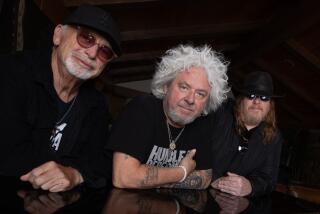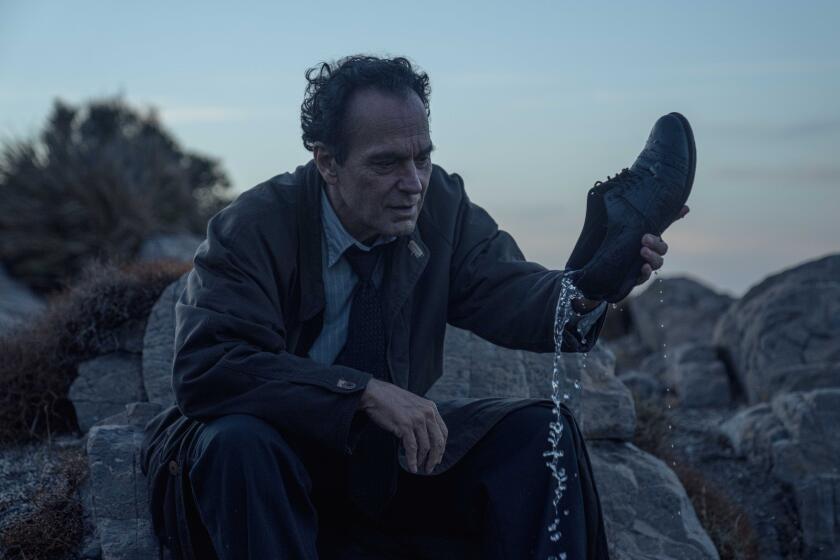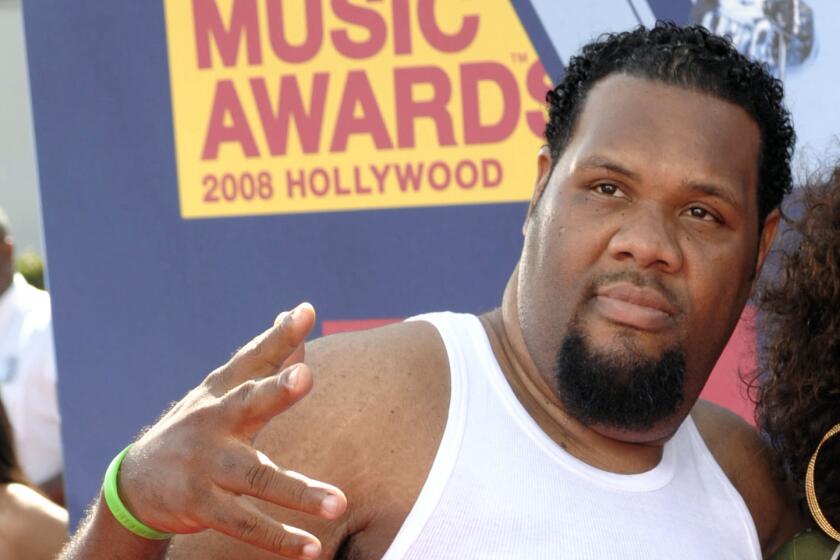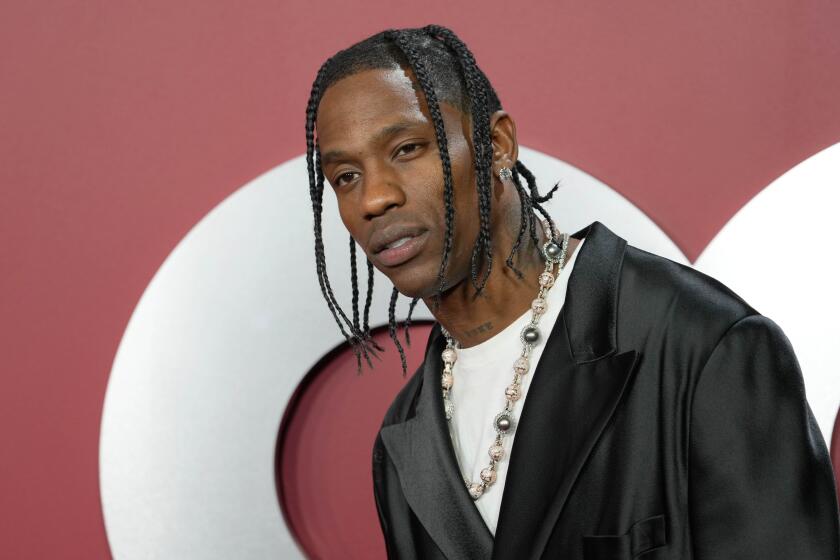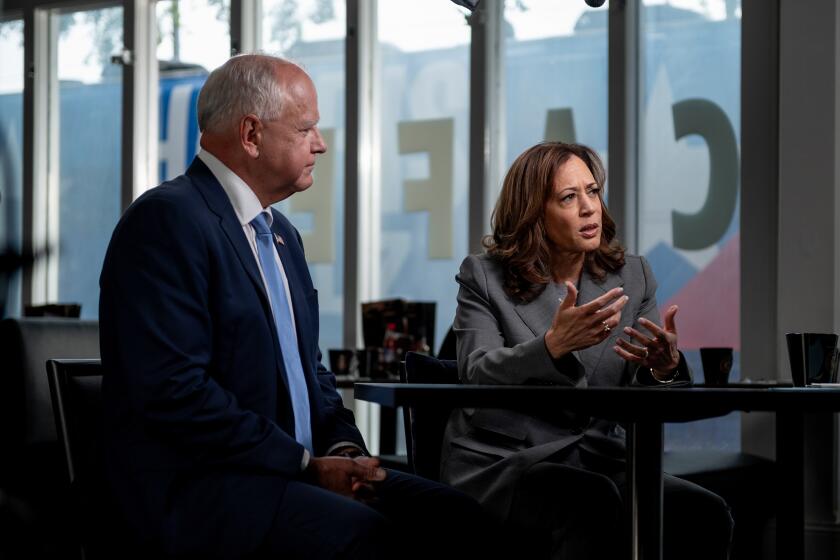Variations on a Native Instrument : Music: ‘Masters of the Steel String Guitar’ tour features six players with diverse styles.
When the “Masters of the Steel String Guitar” tour opens in San Diego tonight, its six featured players will represent an equal number of musical styles, and one major guitar innovation that originated in this city more than 60 years ago.
Similar in scope to the “Masters of the Folk Violin” tour of a couple of years ago, the concert package was organized by the National Council for the Traditional Arts to showcase several of the guitar’s greatest proponents.
Artists performing in tonight’s 8 o’clock show at UC San Diego’s Mandeville Auditorium include acclaimed rock, rockabilly and country guitarist Albert Lee; jazzman Cal Collins (replacing the previously scheduled Tal Farlow, who is ill); award-winning blues guitarist John Cephas; Hawaiian slack-key guitarist Ledward Kaapana; Appalachian folk picker Wayne Henderson, and dobro guitar maestro Jerry Douglas.
The steel string guitar remains the acoustic instrument of choice for most contemporary pickers because it has a sharper attack; a richer, more complex tone; more volume, and better projection than the European-classical type that uses nylon or catgut strings. The steel string has been around in one form or another for centuries, but the variants still extant are mostly American in derivation. Only one, however, can be traced to San Diego.
In the 1920s, John, Rudy and Ed Dopera--who had emigrated here from Czechoslovakia--invented the prototype of what would evolve into the dobro (a contraction of “Dopera brothers”). It is a wood guitar affixed with a plate-like metal resonator and played with a metal bar in the left hand, like a slide guitar.
The fluid sound of the dobro made it a staple of the “Hawaiian parlor” bands popular at the time, but the relatively loud volume it produced eventually found favor with those playing in large country-Western ensembles.
By the 1950s, the dobro had fallen out of vogue, but it was soon to be revived by the legendary Josh Graves of the Flatt and Scruggs bluegrass band. It was at a concert by that aggregate that a very young Jerry Douglas first heard a dobro.
“For me, the dobro’s appeal was a combination of sight and sound,” Douglas, 34, said earlier this week in a phone interview from his home in Nashville, Tenn. “First of all, the singing in the Flatt and Scruggs band wasn’t all that great, and so the singing tone of the dobro that Josh was playing seemed the most ‘vocal’ sound in the band. But it also looked so unusual; Josh had a dobro that was sort of Art Deco in design, and that made it more than just a musical instrument. The dobro became an obsession, and Josh was my one and only model for many years.”
While still in his teens, Douglas performed with the well-known Country Gentlemen, and with such string masters as J. D. Crowe, David Grisman and Ricky Skaggs. He has recorded several albums--most recently for the MCA label’s Masters Series--has won numerous awards for his virtuosity, and is widely considered the most innovative dobro player of the past 25 years.
“I think one reason why I play a little differently from most dobro players is because early on I would learn fiddle tunes note for note,” Douglas said. “I’d play entire melodies, instead of parts of them, and that made me develop some trickier finger work.”
For all his technical skills, however, Douglas’ MCA recordings offer more than show-off pyrotechnics. His own compositions are gorgeous marriages of tunefulness and digital prowess--instrumental “narratives” ripe with melody and song-like changes that provide a fertile field for his improvisations.
Douglas, who listens to a lot of rock and roll, blues and other forms in addition to country, allowed that much of his music writing was inspired by another of the greats featured in the Masters show.
“I’ve been very much influenced by Albert Lee’s work with Emmylou Harris,” he said in reference to the guitarist’s mid-’70s tenure in the country-pop singer’s Hot Band and subsequent session work on her albums. “He is not only a great player, but one who has a very sensitive approach to a song. I’ve learned a lot from listening to him, and I look forward to sharing the stage with him on this tour.”
The Masters concert promises a study in contrasts. Bluesman John Cephas specializes in the “Piedmont” style of finger picking, in which one alternates thumb-picked bass notes with finger-picked treble notes. Cephas has toured the world with his frequent partner, harmonica player Paul Wiggins, and in 1986 the two won the W. C. Handy Award for Best Traditional Album of the Year and were also named Blues Entertainers of the Year.
Native Hawaiian Ledward Kaapana is a master both of slack-key guitar and of the islands’ traditional falsetto singing style. The slack-key style resulted from the Hawaiians’ adaptation of European guitar styles of the 1800s. By retuning the guitar and simultaneously finger picking melody and bass parts in a steady rhythm, the Hawaiians achieved a full, luxuriant tone as well as rhythmic patterns perfectly suited to accompanying the hula.
None of the musical legends emanating from the Blue Ridge mountains of Virginia are any greater than that of Wayne Henderson, a guitarist who still lives in the area bordered by Tennessee and North Carolina. An inveterate winner of flat-picking contests, Henderson actually uses picks attached to a thumb and two fingers to achieve a speed and technical facility that has made him an idol of Nashville’s best guitarists.
The performers will be backed by a trio composed of Portland natives John Stewart and Rob Thomas on guitar and bass, respectively, and drummer Martin Parker, a former member of the Ricky Skaggs band.
More to Read
The biggest entertainment stories
Get our big stories about Hollywood, film, television, music, arts, culture and more right in your inbox as soon as they publish.
You may occasionally receive promotional content from the Los Angeles Times.
